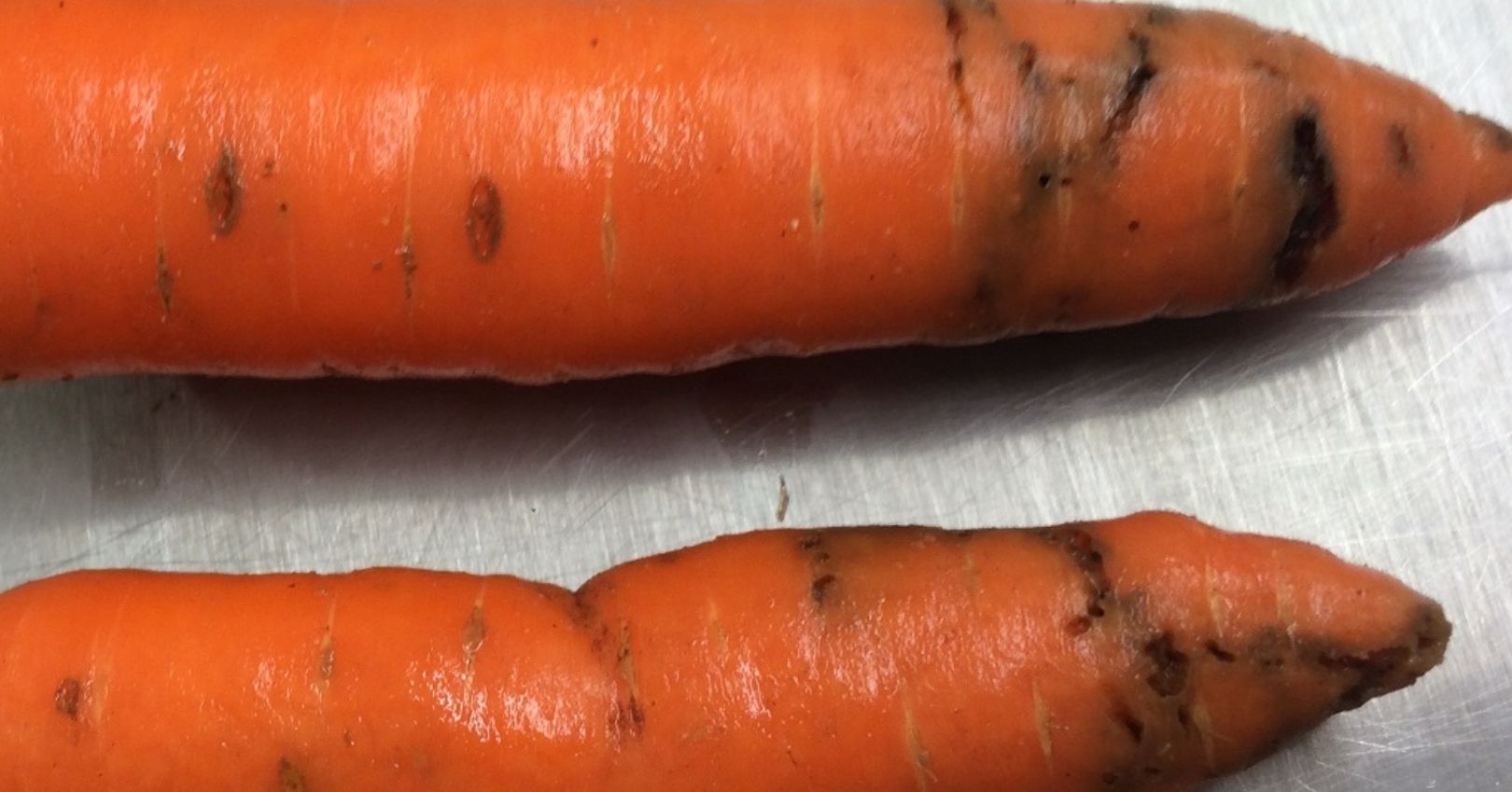Cavity Spot

Casual Agents
Cavity spot is caused by the fungi, Pythium sulcatum and P. violae. These pathogens favor cool temperatures and grow best around 58°F. Though prominently found on carrots, Pythium spp. can cause lesions on alfalfa roots, celery, beets, and other host plants.
Symptoms
Cavity spot causes oval-shaped, depressed lesions along mature carrot taproots. The lesions are large and measure around an inch in diameter. Infections occur in the upper third of the root.
Diseae Cycle
Both P. violae and P. sulcatum occur during times of cool and wet weather. They thrive in moist soils, ideally around a 6.8 pH. Pythium overwinters as oospores in soil, then becomes active as the soil temperature warms, forming zoospores in free water to cause new infections.
Management
- Crop rotation. Rotate away from carrots with a nonsusceptible crop every 3 years.
- Avoid overhead irrigation. Opt for drip irrigation to maintain even soil moisture.
- Harvest carrots soon after maturity. Carrots become more susceptible to cavity rot as they mature.

